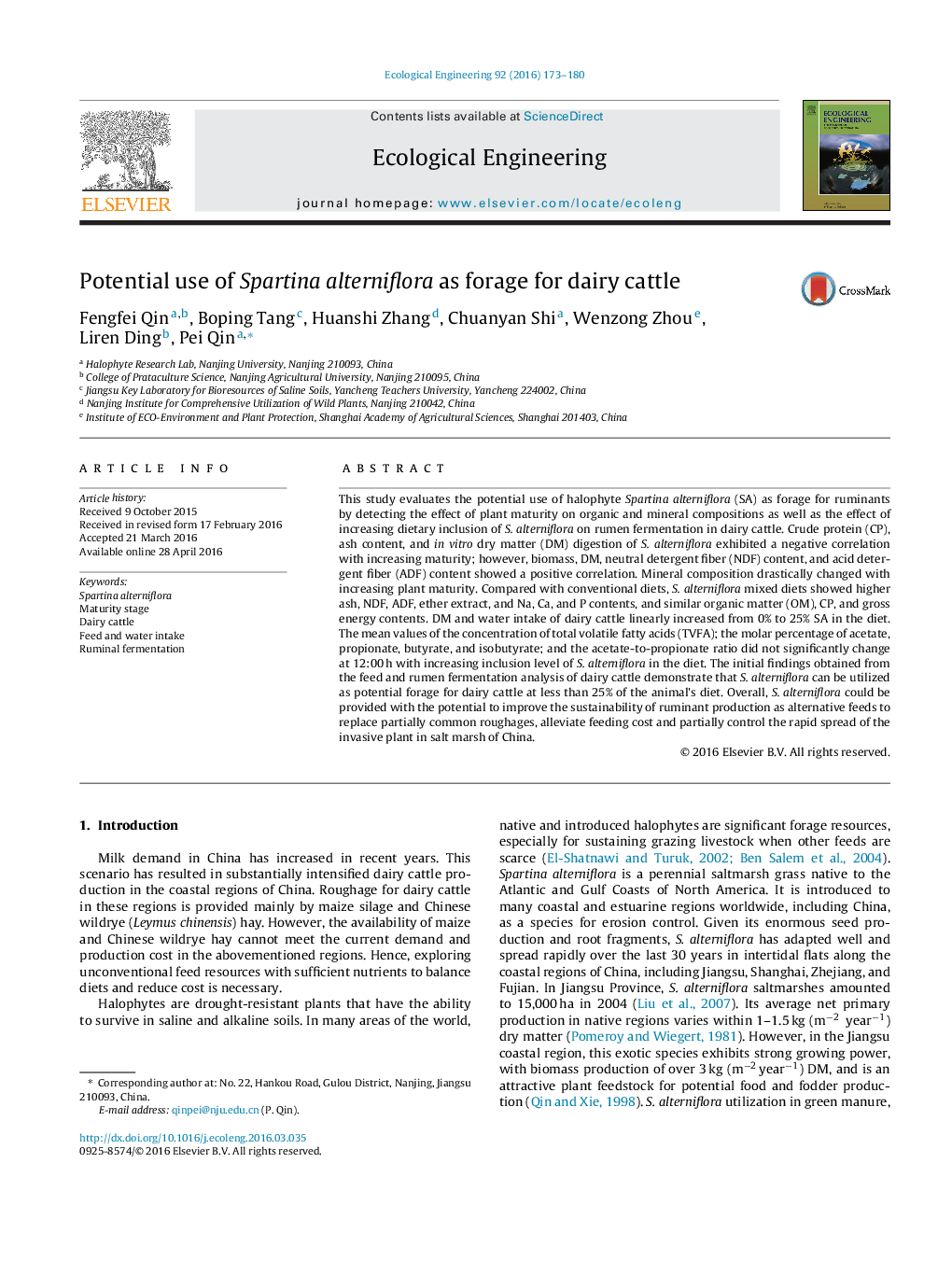| Article ID | Journal | Published Year | Pages | File Type |
|---|---|---|---|---|
| 4388623 | Ecological Engineering | 2016 | 8 Pages |
•S. alterniflora in jointing, heading, and flowering stages was found to be optimum for fodder.•Dry matter and water intake of dairy cattle linearly increased from 0% to 25% S. alterniflora content in the diet.•The initial findings obtained from the feed and rumen fermentation analysis of dairy cattle demonstrate that S. alterniflora can be utilized as potential forage for dairy cattle at less than 25% of the animal’s diet.
This study evaluates the potential use of halophyte Spartina alterniflora (SA) as forage for ruminants by detecting the effect of plant maturity on organic and mineral compositions as well as the effect of increasing dietary inclusion of S. alterniflora on rumen fermentation in dairy cattle. Crude protein (CP), ash content, and in vitro dry matter (DM) digestion of S. alterniflora exhibited a negative correlation with increasing maturity; however, biomass, DM, neutral detergent fiber (NDF) content, and acid detergent fiber (ADF) content showed a positive correlation. Mineral composition drastically changed with increasing plant maturity. Compared with conventional diets, S. alterniflora mixed diets showed higher ash, NDF, ADF, ether extract, and Na, Ca, and P contents, and similar organic matter (OM), CP, and gross energy contents. DM and water intake of dairy cattle linearly increased from 0% to 25% SA in the diet. The mean values of the concentration of total volatile fatty acids (TVFA); the molar percentage of acetate, propionate, butyrate, and isobutyrate; and the acetate-to-propionate ratio did not significantly change at 12:00 h with increasing inclusion level of S. alterniflora in the diet. The initial findings obtained from the feed and rumen fermentation analysis of dairy cattle demonstrate that S. alterniflora can be utilized as potential forage for dairy cattle at less than 25% of the animal’s diet. Overall, S. alterniflora could be provided with the potential to improve the sustainability of ruminant production as alternative feeds to replace partially common roughages, alleviate feeding cost and partially control the rapid spread of the invasive plant in salt marsh of China.
